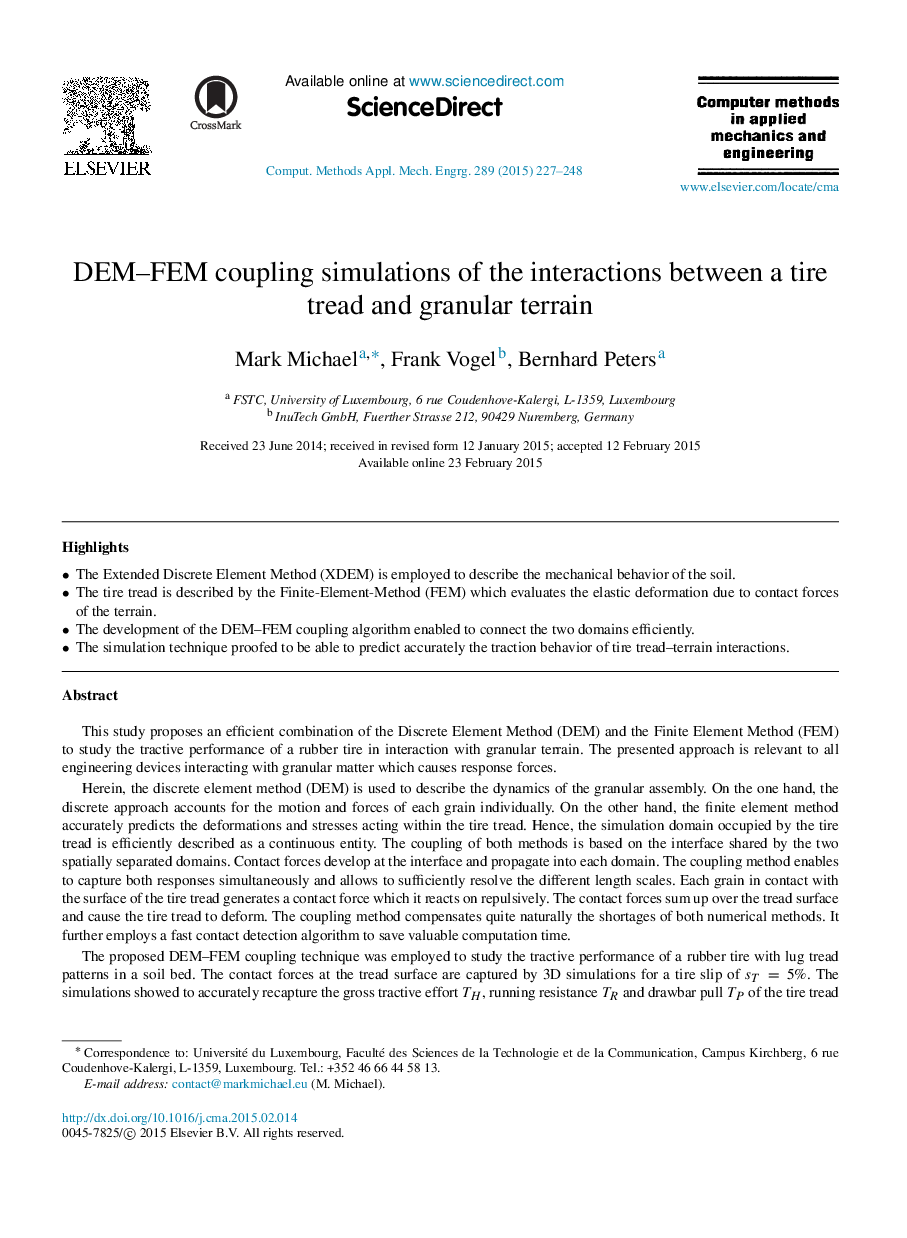| Article ID | Journal | Published Year | Pages | File Type |
|---|---|---|---|---|
| 497744 | Computer Methods in Applied Mechanics and Engineering | 2015 | 22 Pages |
•The Extended Discrete Element Method (XDEM) is employed to describe the mechanical behavior of the soil.•The tire tread is described by the Finite-Element-Method (FEM) which evaluates the elastic deformation due to contact forces of the terrain.•The development of the DEM–FEM coupling algorithm enabled to connect the two domains efficiently.•The simulation technique proofed to be able to predict accurately the traction behavior of tire tread–terrain interactions.
This study proposes an efficient combination of the Discrete Element Method (DEM) and the Finite Element Method (FEM) to study the tractive performance of a rubber tire in interaction with granular terrain. The presented approach is relevant to all engineering devices interacting with granular matter which causes response forces.Herein, the discrete element method (DEM) is used to describe the dynamics of the granular assembly. On the one hand, the discrete approach accounts for the motion and forces of each grain individually. On the other hand, the finite element method accurately predicts the deformations and stresses acting within the tire tread. Hence, the simulation domain occupied by the tire tread is efficiently described as a continuous entity. The coupling of both methods is based on the interface shared by the two spatially separated domains. Contact forces develop at the interface and propagate into each domain. The coupling method enables to capture both responses simultaneously and allows to sufficiently resolve the different length scales. Each grain in contact with the surface of the tire tread generates a contact force which it reacts on repulsively. The contact forces sum up over the tread surface and cause the tire tread to deform. The coupling method compensates quite naturally the shortages of both numerical methods. It further employs a fast contact detection algorithm to save valuable computation time.The proposed DEM–FEM coupling technique was employed to study the tractive performance of a rubber tire with lug tread patterns in a soil bed. The contact forces at the tread surface are captured by 3D simulations for a tire slip of sT=5%sT=5%. The simulations showed to accurately recapture the gross tractive effort THTH, running resistance TRTR and drawbar pull TPTP of the tire tread in comparison to related measurements. Further, the traction mechanisms between the tire tread and the granular ground are studied by analyzing the motion of the soil grains and the deformation of the tread.
